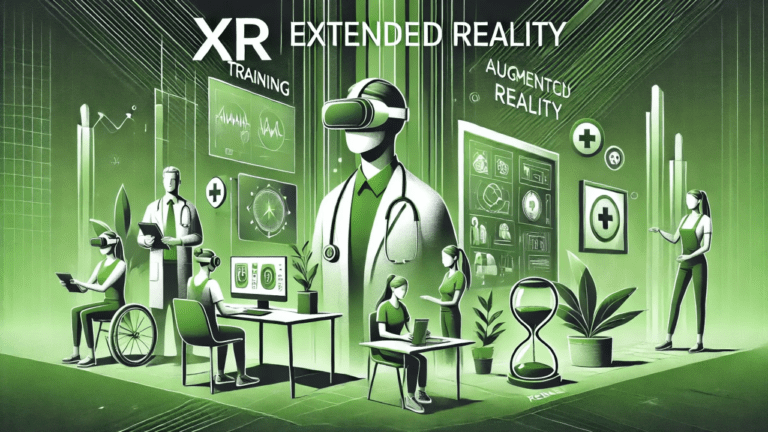In 2025, Extended Reality (XR) encompassing Augmented Reality (AR), Virtual Reality (VR), and Mixed Reality (MR) is reshaping industries by delivering unparalleled value to training, education, and retail. For Chief Technology Officers and business leaders, embracing XR offers transformative potential while highlighting the need for skilled technical talent and thoughtful integration strategies.
XR in Training and Education: Redefining Learning
Enhanced Training Capabilities XR technologies create immersive, risk-free environments for skill-building. Whether simulating high-stakes medical procedures, piloting aircraft, or mastering complex machinery, XR significantly reduces training costs and risks. Participants can practice and refine their abilities in realistic scenarios, improving retention and accelerating skill acquisition.
Revolutionizing Education In classrooms, XR transports students to interactive worlds far beyond traditional teaching methods. From virtual explorations of ancient civilizations to hands-on experiments in virtual laboratories, XR personalizes learning and adapts to diverse educational needs. These tools democratize access, bridging gaps for underserved communities and providing experiences once limited to specific resources or locations.
For organizations, the ability to tailor XR experiences to different learning styles offers a competitive edge, equipping employees and students alike with modern, impactful tools for success.
Retail Transformation: Engaging Customers with Immersive Experiences
Reimagining the Shopping Journey XR revolutionizes the retail landscape by enabling consumers to interact with products in novel ways. Through AR, shoppers can visualize furniture in their homes, try on clothing virtually, or see how cosmetics complement their features. VR-powered virtual showrooms offer rich, immersive brand experiences, creating connections that inspire loyalty and confidence.
Strategic Advantages for CTOs Integrating XR into retail is not merely about showcasing technology; it’s about driving customer engagement, reducing returns, and offering convenience. By embedding XR seamlessly into the customer journey, brands can differentiate themselves in increasingly competitive markets.
Tackling XR Adoption Challenges
Hardware Costs and Accessibility While XR hardware like VR headsets and AR glasses can be cost-prohibitive, creative solutions exist. Companies can:
- Leverage scalable AR solutions on smartphones, minimizing upfront investment.
- Explore leasing or partnering with providers for hardware bundles.
- Gradually roll out XR through pilot programs to demonstrate ROI before committing to broader implementation.
Creating High-Value Content Engaging XR content requires blending technical innovation with creativity:
- Talent Development: Recruit XR specialists or provide upskilling opportunities for existing teams.
- Collaboration: Partner with XR developers to produce bespoke solutions tailored to specific business objectives.
- Efficient Platforms: Utilize industry-standard tools like Unity and Unreal Engine to streamline development.
Strategic Integration and Scalability
Pilot Programs for Insightful Implementation Launching small-scale projects allows businesses to gather user feedback, measure performance, and refine approaches before full-scale deployment.
Infrastructure for Growth Cloud-based content management and delivery systems ensure scalability, enabling organizations to expand XR offerings seamlessly as adoption grows.
User-Centric Design XR solutions must prioritize intuitive and user-friendly interfaces. Overly complex systems risk alienating users and reducing the technology’s impact.
Data-Driven Optimization Analytics tools can monitor user behavior within XR environments, providing actionable insights for refining content, improving user experiences, and maximizing ROI.
Ethical Considerations and Compliance With XR’s capability to collect detailed user data, strict adherence to privacy regulations like GDPR and HIPAA is crucial. Organizations must uphold ethical standards to maintain trust and ensure compliance.
The Path Forward
For organizations aiming to lead in the digital age, XR represents a pivotal opportunity. Beyond technical innovation, it transforms how businesses train employees, educate communities, and engage customers. By addressing challenges like hardware costs and content creation and investing in technical talent, companies can unlock XR’s full potential.
CTOs and technology leaders must champion this evolution, focusing on scalable, data-driven, and user-centric strategies. With thoughtful implementation, XR can elevate operational efficiency, enhance customer and employee engagement, and position organizations as leaders in innovation. In 2025 and beyond, the organizations that embrace XR’s possibilities will shape the future of their industries.






